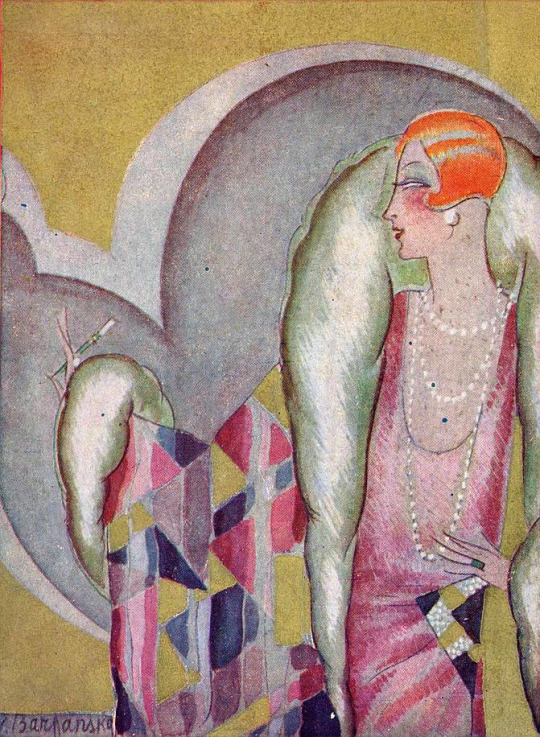#Barjansky
Explore tagged Tumblr posts
Text
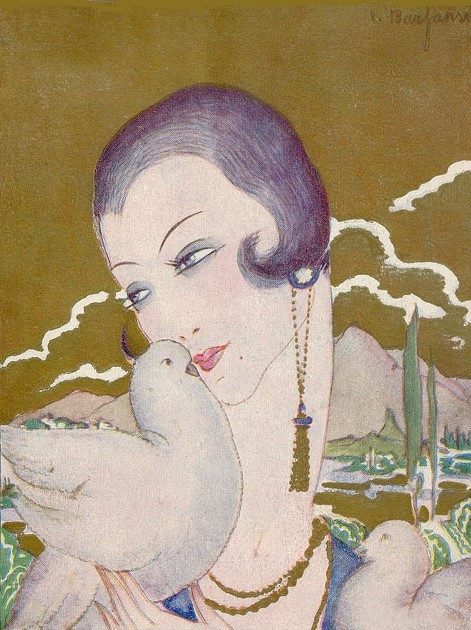
Vladimir Barjansky (1892-1968), Art Deco Cover design for Programme booklet, Program presenting the musical Fragonard with André Baugé and Jane Marnac. Théâtre du Petit-Saint-Martin (Théâtre de la Porte Saint-Martin), Paris. 1934.
#Vladimir Barjansky#illustration#1934#cover#booklet#Program Booklet#programme booklet#cover design#cover art#Théâtre du Petit-Saint-Martin#Théâtre de la Porte Saint-Martin#cover illustration#barjansky#art deco#art deco cover#french art deco#my edits#art#1934 illustrations
49 notes
·
View notes
Photo
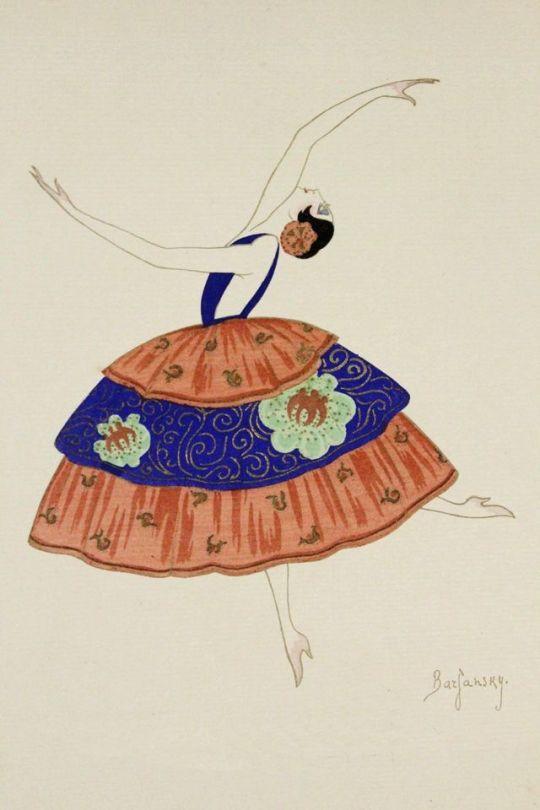
Vladimir Barjansky, Mademoiselle Paulette Duval. Costume by Georges Doeuillet. La Gazette du Bon Ton, 1920.
#art deco#vladimir barjansky#1920#paulette duval#doeuillet#la gazette du bon ton#gazette du bon ton#georges doeuillet#georges camille doeuillet#illustration#fashion illustration#costume illustration#vintage#vintage costume#vintage costume illustration#barjansky#antique#antique illustration#antique costume#antique costume illustration#art deco illustration#art deco costume
38 notes
·
View notes
Text
She had an artistic temperament, but being unable to express herself in any branch of art, she made an art out of herself.
Catherine Barjansky on Marchesa Luisa Casati
#catherine barjansky#luisa casati#marchesa luisa casati#words#yvon: my dangerous liaisons#delysia: my sugar coating
18 notes
·
View notes
Text
“With her I experienced the curious feeling of living in today yet being able to reach out and touch the past”

Second and final part of Catherine Barjansky's account of her meetings with Queen Marie Sophie in 1914 (you can read part 1 here). In this part Catherine goes to a strange concert, tells us of Marie's eating habits, and reflects over the Wittlesbach sister's lives while sculpting. Also completely unwarranted Francesco II's looks bashing (we hate to see it):
A few days later my husband and I received a letter from the Comtesse de la Tour, inviting us to accompany the Queen of Naples to a concert in Geneva and to dine with her. When we reached the hotel lobby the Comtesse was waiting for us.
“The Queen will come in a moment,” she announced, and she hurried away. The Comtesse too lived in a phantom kingdom, and the etiquette of a court was part of the fabric of her life.
In a little while the lady in waiting returned with the Queen, the little white-haired Comtesse pattering along with fast steps, struggling to keep up with the long swift pace of the Queen. The latter was dressed as inconspicuously as though she wished to be invisible, in a long black coat, black hat, and black veil. She passed through the lobby like a breeze, a little breath of cold air, and yet eyes followed her as she went because she was so unlike anyone else.
In a dark automobile driven by an old chauffeur, we went to the concert hall. That was a strange concert, for most of the musicians were busy making war instead of making music, and the orchestra had been scrambled together haphazardly. Few of the players were professional musicians; they were unaccustomed to ensemble playing, and they had been inadequately rehearsed. Yet the conductor, though he was manifestly dissatisfied with the result, drew some wonderful phrases from them. He was, we learned from the program, the great musician and composer, Ernest Bloch.
The Queen, stiff and erect it was impossible to imagine that emaciated body at rest listened to the music with closed eyes. And when the concert was over, she hastened through the hall like drifting smoke and into a side street where her motorcar was waiting.
Dinner was served in the small dining room of her suite. While we waited to be summoned, the Comtesse told us that the Queen was accustomed to dining early because she ate only one meal a day. The routine of her life, like everything about her, was strange. Every morning, regardless of the weather, she went out at eight o'clock and for two hours walked swiftly through the streets. Geneva is famous for its disagreeable and severe winds, but they never prevented the Queen from taking her outing. It was almost as though she disregarded the weather, as she did mankind, as unworthy of her notice.
When she returned to her hotel she ate some ice cream. Between three and four in the afternoon a large dinner was served, and again from six to eight in the evening she sped through the streets, as though in swift pursuit of a mirage, the ghost of a queen moving unseen by the people of Geneva. At eight o'clock she ate more ice cream and so ended her curious day.
That day at dinner she sat between my husband and me. The only other people present were her lady in waiting and Mr. Tramontana, her court gentleman, a Neapolitan. These two people had left Naples with her at the time of her exile and had spent their whole lives in her service, creating by their devotion and their sacrifice a phantom kingdom in which the Queen could live.
It was amusing to see what quantities of food this shadow of a woman could consume: soup, steak, vegetables, dessert, coffee. There was comedy in the stately meal and the voracious appetite.
And after dinner I began the wax portrait. She is imprisoned there in wax, the Queen of Naples, with her stiff back; her austere black dress; her long and ghostly hands that will not let go their tenacious hold of what is hers; the narrow feet resting so lightly on a gold-and-black cushion; the strange blue eyes and aristocratic nose; the bitter mouth with its narrow lips; the high forehead with its black braids and imaginary crown.
I did the sculpture with fabrics. The figure sits on an arm chair that looks like a throne, its color a faded red and gold. I covered the body with black velvet and tulle. The background is an old brocade of gray and gold. The face broods, the bitter mouth is unreconciled.
While the wax portrait was gradually taking shape under my fingers, I thought of the extraordinary fate that had been the lot of so many of that Bavarian house of Wittelsbach. As the waxen Queen of Naples took on life and resemblance, I studied my sitter whose kingdom had not existed since Garibaldi united Italy under the house of Savoy, which she hated with a deep, corroding hatred. I thought how strange it was that this hotel, where she had elected to live out her exile, was directly opposite the spot where, years before, her sister Elizabeth had been staying at the time of her death. It was as difficult for me to imagine the radiant Elizabeth of Bavaria, wife of Francis Joseph, becoming old, as it was to picture this gaunt woman as young and lovely. Yet lovely she had been, for many men had loved her. Young too. For she was only nineteen when she had her brief moment of authentic glory. One would think she might, even then, have been somewhat disillusioned with kingdoms, married as she was to a man so ugly that no one ever dared to take his photograph, a King who, in the face of revolt, cravenly took himself off to Rome. But the young Queen Maria of Naples had appeared on the barricades and stood all day long, in the face of whining bullets, encouraging the soldiers, urging them on by her presence.
Modeling the thin lips, that bitter mouth, sterile, devoid of all passion, one could not help wondering how much of that stormy past she remembered and what meaning it had for her now.
These Wittelsbachs certainly were destined to lead violent lives. Empress Elizabeth of Austria had died at the hand of an assassin, and her only son had been a suicide. Another sister, the Duchess Sophie of Alençon, was at one time betrothed to Ludwig, the eccentric King of Bavaria. She was later burned to death in a fire at a charity bazaar.
Each time I came to work on the wax portrait, my husband accompanied me. Arid on one of these occasions we took part in the Queen's evening walk. On our return to the hotel we found two Neapolitans waiting for her at the door. “Long live the Queen!” they shouted lustily. On the long pale face appeared the rare smile that made her nearly human. She extended her hands to the man and woman, who bowed and kissed them. “Long live the Queen!” they shouted again. She smiled once more, entered the hotel and disappeared in the cage of the elevator.
Later I took the wax portrait with me to Rome, where I finished it and so, although in wax, she came again to Italy, which she loved and still regarded as a possession, a piece of property wrongfully snatched from her grasp. She was seventy-four at the time I met her, and after leaving Switzerland I was never to see her again and never to forget her. With her I experienced, as I later did in Egypt, the curious feeling of living in today yet being able to reach out and touch the past.
#this sounds very in character with marie so I choose to believe that most of this account is reliable#minus the francesco part wtf was she talking about there are tons of pics of him he was an absolutely normal looking guy leave him alone !!#queen marie sophie of the two sicilies#catherine barjansky#portraits with backgrounds
13 notes
·
View notes
Photo

Federico Beltrán Masses (1885-1949)
La nuit de Eve (Marchesa Casati), 1929
* Luisa, Marchesa Casati Stampa di Soncino (1881-1957), was an Italian heiress, muse, and patroness of the arts in early 20th-century Europe.
For the first three decades of the twentieth century, the fabled Marchesa Luisa Casati (1881-1957) triumphed as the brightest star in European society. Possibly the most artistically represented woman in history after the Virgin Mary and Cleopatra, the portraits, sculptures and photographs of her would fill a gallery. In a quest for immortality, she had herself painted by Giovanni Boldini, Augustus John, Kees Van Dongen, Romaine Brooks and Ignacio Zuloaga; sketched by Drian, Alberto Martini and Alastair; sculpted by Giacomo Balla, Catherine Barjansky and Jacob Epstein; and photographed by Man Ray, Cecil Beaton and Baron Adolph de Meyer. (Official Website)
8 notes
·
View notes
Text

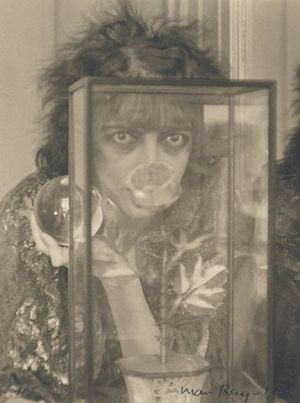
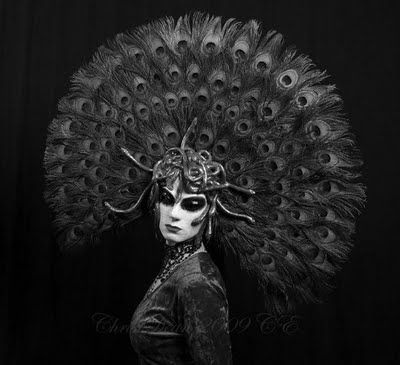

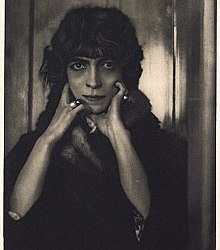
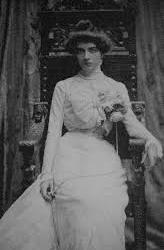
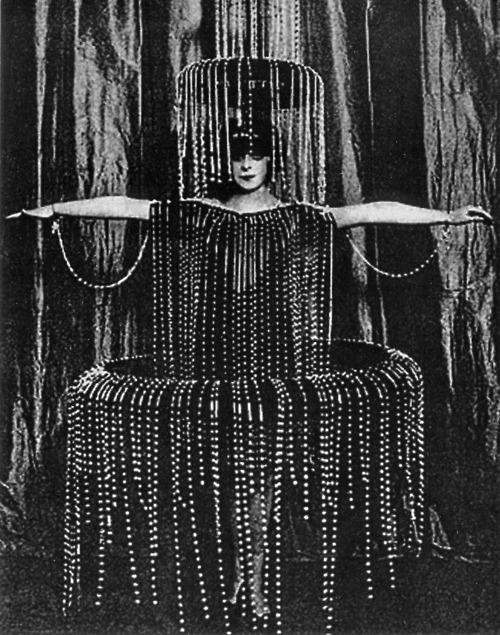
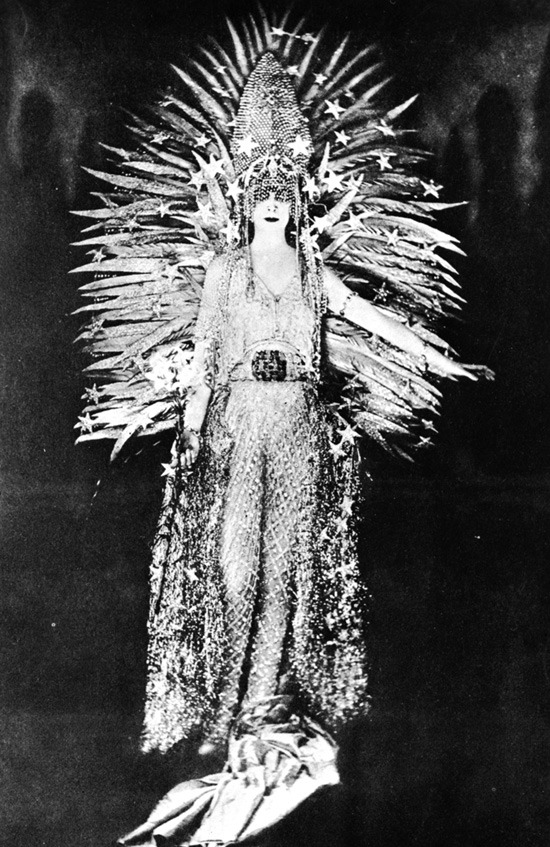
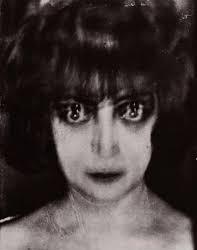
Style appreciation post:
Luisa Casati
Luisa, Marchesa Casati Stampa di Soncino(23 January 1881 – 1 June 1957), was an Italian heiress, muse, and patroness of the arts in early 20th-century Europe. She was said to walk around Venice at night with her pet cheetahs, naked but for a fur cloak. For the first three decades of the twentieth century, the fabled Marchesa Luisa Casati (1881-1957) triumphed as the brightest star in European society. Possibly the most artistically represented woman in history after the Virgin Mary and Cleopatra, the portraits, sculptures and photographs of her would fill a gallery. In a quest for immortality, she had herself painted by Giovanni Boldini, Augustus John, Kees Van Dongen, Romaine Brooks and Ignacio Zuloaga; sketched by Drian, Alberto Martini and Alastair; sculpted by Giacomo Balla, Catherine Barjansky and Jacob Epstein; and photographed by Man Ray, Cecil Beaton and Baron Adolph de Meyer. She frightened Artur Rubinstein, angered Aleister Crowley and intimidated T.E. Lawrence. As muse to the Italian futurists F. T. Marinetti, Fortunato Depero and Umberto Boccioni, she conjured up an elaborate marionette show with music by Maurice Ravel. Accompanied by her pet boa constrictor, she checked into the Ritz Hotel in Paris, where it escaped. Considered the original female dandy, Léon Bakst, Paul Poiret, Mariano Fortuny and Erté dressed her. She adorned herself with the jewels of Lalique and directly inspired the famed 'Panther' design for Cartier. Her parties and appearances at others became legendary–at one celebration in her Venetian palazzo, Nijinsky invited Isadora Duncan to dance; Picasso attended a soirée at her Roman villa; while she costumed herself as a living artwork inspired by Dali for another. She was a subject of intrigue to Marcel Proust and the Comte Robert de Montesquiou. She whirled through Parisian nightlife, making an unforgettable impression on Colette, Elsa Schiaparelli and Coco Chanel. She was the only woman ever to astonish her lover Gabriele D'Annunzio, one of Italy's most notorious and revolutionary writers.
Source: www.marchesacasati.com
#fashion#eccentric#dandy#luisa casati#eccentric inspiration#witchy fashion#goth#witchy aesthetic#eccentric aesthetic
54 notes
·
View notes
Photo

Vladimir BARJANSKY · Mlle Paulette Duval. Costume de Doeuillet (pl.5, La Gazette du Bon ton, 1920 n°1). Welcome home. https://www.instagram.com/p/CZOlqMEIZh0/?utm_medium=tumblr
1 note
·
View note
Text
January 31 in Music History
1573 Birth of German composer Ambrosius Metzger in Nuremberg.
1573 Birth of composer Giulio Cesare Monteverdi.
1679 FP of Jean-Baptiste Lully's opera Bellerophon, at Paris Opera.
1727 FP of G. F. Handel's opera Admeto re di Tessaglia at the Haymarket Theater in London.
1734 Birth of composer Julien-Amable Mathieu.
1750 Birth of tenor Franz Christian Hartig.
1759 Birth of French flutist, bassoonist and composer Francois Devienne in Joinville.
1783 Death of castrato Caffarelli (Gaetano Majorano).
1784 Birth of Prussian composer Carl Wilhelm Henning.
1788 Death of Italian composer Francesco Maria Zannetti, at 50.
1797 Birth of Austrian composer Franz Schubert in Vienna.
1798 Birth of German conductor and composer Carl Gottlieb Reissiger.
1827 Birth of soprano Marie Cabel.
1836 Birth of Polish composer Henryk Szulc.
1854 Birth of American composer, pianist William Hall Sherwood.
1872 Birth of American composer Rupert Hughes.
1881 Birth of tenor Anton Arnold.
1882 Birth of baritone Peter Dawson.
1891 Birth of German composer Max Drischner.
1894 FP of S. Rachmaninoff's Trio élégiaque No. 2 in d minor, for violin, cello, and piano, in Moscow, with Julius Conus, violin; Anatoly Brandukov, cello and Rachmaninoff at the piano in Moscow.
1895 Birth of tenor Otakar Macha.
1901 Birth of Slovenian composer Blaz Arnic.
1906 Birth of English composer Benjamin Frankel in London.
1906 FP of Frederick Sheperd’s opera The Pipe of Desire, Op.21.
1910 Death of tenor Gustav Walter.
1913 Birth of Argentinian composer Hector Iglesias Villoud in San Nicolás.
1916 Birth of soprano Rina Gigli in Naples.
1921 Birth of American motion picture actor and tenor Mario Lanza.
1922 Death of Austrian composer Heinrich Reinhardt, at age 56.
1923 FP of Delius' Cello Concerto in Vienna by Alexander Barjansky, Ferdinand Lowe, cond.
1925 FP of Vladimir Dukelsky's ballet Zéphir et Flore in Paris. He composed popular music under the name Vernon Duke.
1935 Birth of Bulgarian composer Bojidar Dimov in Lom.
1935 FP of Mario Castelnuovo-Tedesco's Cello Concerto. New York Philharmonic, with cellist Gregor Piatigorsky.
1937 Birth of American minimalist composer Philip Glass in Baltimore, MD.
1943 FP of Richard Strauss' Divertimento on pieces by Couperin in Vienna.
1945 Birth of American composer Noah Creshevsky.
1947 Birth of American composer Jim Nollman.
1948 Birth of bass Kolos Kovacs.
1952 FP of Leon Kirchner's Sinfonia in NYC.
1953 FP of Vittorio Giannini's opera The Taming of the Shrew, as concert work, in Cincinnati, OH.1955 Birth of tenor Robert Gambill.
1955 Death of tenor Frantisek Krampera.
1960 Birth of English composer and pianist George Benjamin in London.
1965 Birth of Israeli-born Canadian cellist Ofra Harnoy.
1969 Death of composer Alexander Mikhaylovich Dzegelyonok, at age 77.
1972 Death of conductor Howard Barlow, conductor for many years of radio's Voice of Firestone, at age 79.
1972 Death of Hungarian composer Istvan Szelenyi, at age 67.
1973 Death of mezzo-soprano Giuseppina Zinetti.
1975 Death of soprano Elsa Alsen.
1978 Death of soprano Margit Angerer.
1986 FP of Joan Tower's Piano Concerto Homage to Beethoven.Hudson Valley Philharmonic Chamber Orchestra conducted by Imre Pallo, Jacquelyn M. Helin, piano.
1987 FP of David Maslanka's Wind Quintet No. 2. Manhattan Quintet at Carnegie Hall's Weill Recital Hall in NYC.
1989 Death of Japanese composer Yasushi Akutagawa, at age 63.
1994 Barcelona opera theater Gran Teatro del Liceo burns down.
3 notes
·
View notes
Text
@grunf72: @barjanski @phrjn Yesss! #Maersk #Svitzer
from http://twitter.com/grunf72 via IFTTT
0 notes
Photo

Barjansky
276 notes
·
View notes
Text

1930 Vladimir Barjansky (1892-1968), Art Deco Cover design for Programme booklet, Théâtre du Gymnase or Théâtre du Gymnase Marie Bell in Paris.
#1930#cover#vladimir barjansky#art deco#art deco cover#art deco booklet#french art deco#theater program#booklet#theater booklet#booklet cover#cover illustration#cover art#art deco illustration#Programme booklet#Théâtre du Gymnase#Théâtre du Gymnase Marie Bell#barjansky#milo theatre
30 notes
·
View notes
Text
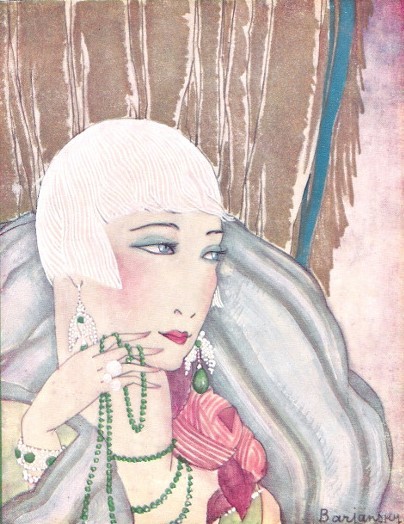
1922 Vladimir Barjansky (1892 Odessa - 1968 Nice) Art Deco Cover illustration Program booklet for Theatre Gaite Lyrique (The Théâtre de la Gaîté on the rue Papin), (Gaîté-Lyrique) in Paris.
#1922#cover#Vladimir Barjansky#illustration#Barjansky#art deco#art deco illustration#Theatre Gaite Lyrique#The Théâtre de la Gaîté#rue papin#Gaîté-Lyrique#paris#paris france#20s paris#20s illustrations#1922 illustration#Théâtre Michel#theatre program#un programme#art deco cover#cover art#barjansky#french art deco#program cover#booklet#theater program#theater booklet#booklet cover
10 notes
·
View notes
Text
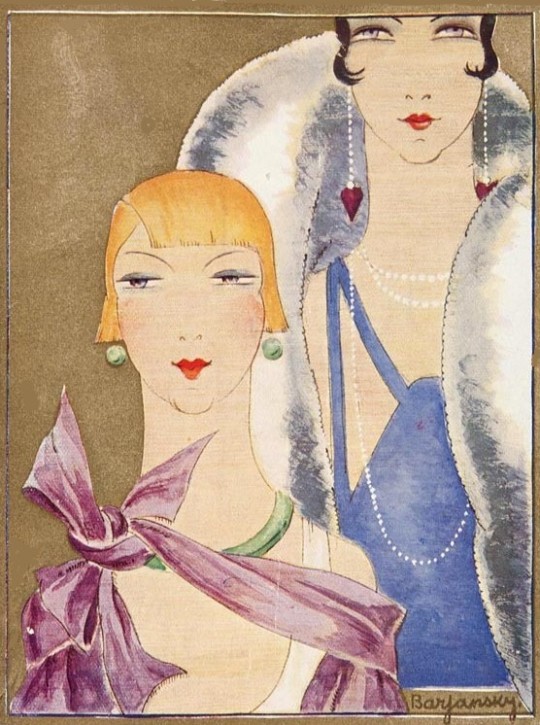
1929 Vladimir Barjansky (1892-1968), Art Deco Cover design for Programme booklet, Program presenting Le Loup Garou, Comedy Theatre Caumartin (Théâtre de la Comédie Caumartin), Paris.
#1929#cover#Vladimir Barjansky#Comédie-Caumartin#paris#theatre#program cover#cover design#programme booklet#program booklet#booklet#Comedy Theatre Caumartin#Théâtre de la Comédie Caumartin#A Loup-Garou#Le Loup Garou#art deco style#art deco cover#barjansky#french art deco
5 notes
·
View notes
Text
“A queen from a fairy tale in which none but she believed”


Searching for information about Queen Marie Sophie of the Two Sicilies in the Archive, as one does, I came across a book called Portraits with backgrounds, written by sculptor Catherine Barjansky and published in 1947. I couldn't find much information on Catherine, only that she was born in 1890 in Odessa and moved to Munich in 1910 to study sculpture. She lived in several countries with her husband the cellist Alexandre Barjansky, whom she married in 1914, and after they separated in 1940 she moved to New York, where she lived for the rest of her life, dying in 1965.
Queen Marie was one of Catherine's many sitters. She dedicates the half of chapter five of her book to the deposed queen, which is by far the most detailed account of Marie as an old woman that I've ever come across. The entry is long, so I divided it in two parts. In this first part, Catherine narrates her first meeting with the last queen of the Two Sicilies in Switzerland, 1914:
A PHANTOM QUEEN AND A TORRENT OF MUSIC “HER Majesty the Queen will appear in a few minutes,” whispered the Comtesse de la Tour, lady in waiting to the Queen of Naples. How strange those words sounded in that conventional living room in the little hotel in Geneva! For the Queen of whom the little white-haired lady in waiting spoke with such ceremony had lost her throne fifty years before. Few people even remembered the Kingdom of Naples. The very existence of this woman was an historical anachronism. But not to the Comtesse de la Tour who, by a personal act of faith, managed to turn an ordinary hotel suite into a royal palace. Never having met a queen before, I did not know how to behave nor what was expected of me. And this queen, even in exile, perhaps because of her exile, was punctilious about etiquette. On the journey from Lausanne I had bombarded my husband with questions. What was she like? She was a very unusual woman, he said. She would interest me. He had met her first in Paris, where she had a charming house and occasionally received artists, among them Caruso who was a great friend of hers. Even there, Alexandre said, where she could walk unknown through the streets, she lived as though she were surrounded by high walls, remote from the world, untouchable. Several months of each year she spent in Munich because the Prince-Regent of Bavaria was a relative of hers. At that time, King Otto of Bavaria was in a sanitarium.
The door opened. The ghost of a woman stood there for a moment and then came forward swiftly. She was very tall, with a face as narrow as a knife blade; a body as thin, as narrow, as unsubstantial as a shadow. It was the body of a skeleton. She wore a long simple black dress with a high collar, her long neck swathed in tulle, under which gleamed a necklace of huge pearls. Her hands were almost transparent, with incredibly long fingers. Her eyes were pale blue and seemed to give out a blue light. Her nose was thin and long, her lips thin and expressive. Her hair was white with two heavy braids, which, surprisingly enough, were almost black, wrapped around her head, forming a sort of crown over her high forehead. She smiled, and the severe expression of her face altered, became softer, and even kind in a detached way. She gave me her long pale hand, and for the first time in my life I made a deep curtsy. My husband bowed and kissed her hand, and she seated herself, very erect, not touching the back of her chair. She sat on the ordinary hotel chair as though she were on a throne, and held her head as though her black braids were really a royal crown. It was an imaginary crown, but one of which she was conscious every moment of her life.
All that afternoon we sat in the little hotel room, while she carried on a conversation with my husband, and I, aside from answering an occasional question, was silent and studied her. She was gracious and kind, but she was a phantom woman on a cloud, remote from the rest of humanity. She was a being from the past, a ghost, a queen from a fairy tale in which none but she believed. She went through life holding high her head with its imaginary crown and conscious of an enormous distance between her and ordinary people, because she was not real.
Since then I have met other crowned heads in Europe; but always, when I think of a queen, it is of the Queen of Naples who lived for fifty years in exile, without a throne, without a country, with nothing but a dream to comfort her.
At length I gathered together my courage and asked whether she would let me bring some wax and do her portrait. “Oh, yes,” she said readily. “The Comtesse will write to you.”
#another day wishing there were good pics of marie at old age#there are some of her with franz josef in 1907 but you can't see her face properly in those :(#queen marie sophie of the two sicilies#catherine barjansky#portraits with backagrounds
14 notes
·
View notes
